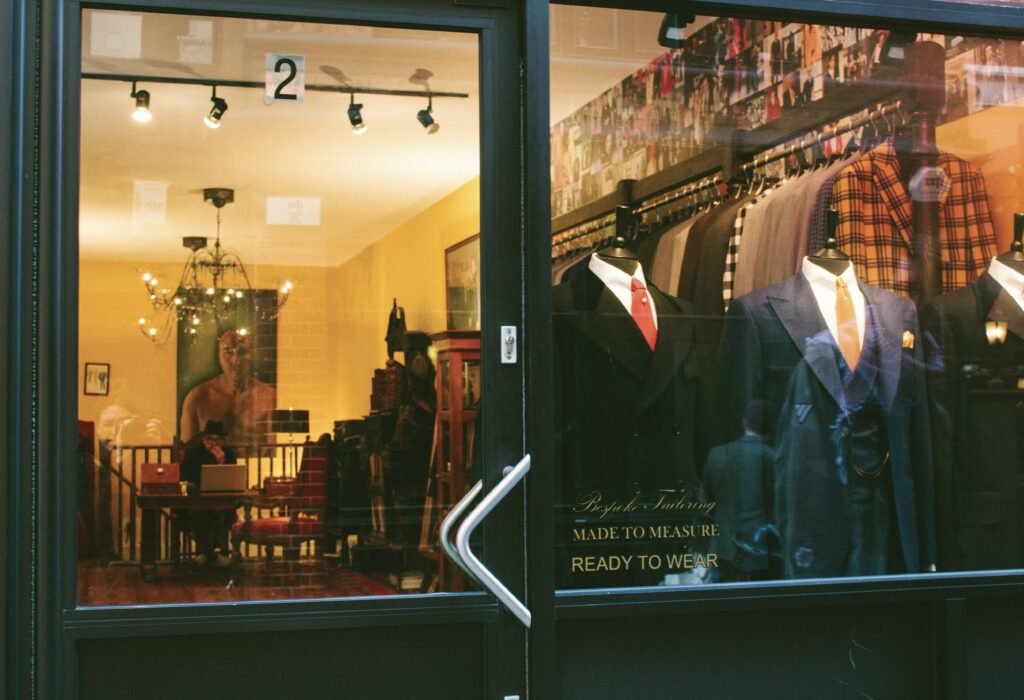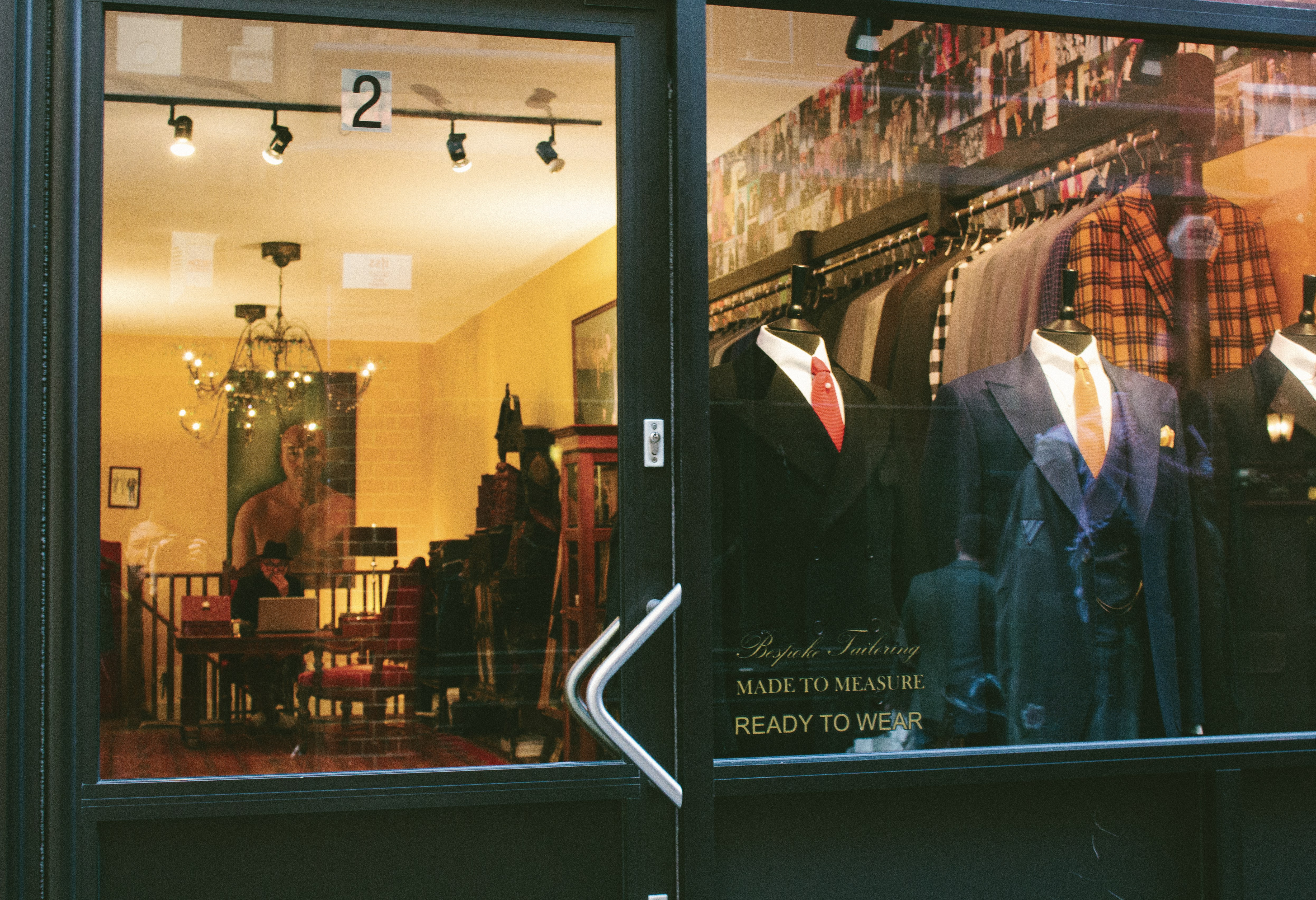- Use Code "WELCOME10" To Get 10% Off Your First Purchase!


Understanding Alterations: What They Are and When to Use Them
Clothing alterations refer to the process of making adjustments to existing garments to achieve a better fit or to refresh their appearance. This service is particularly beneficial for those who may find their clothing no longer fits as it once did, or for individuals seeking to enhance their wardrobe without the expense of purchasing new clothing. Common alterations include hem adjustments, taking in or letting out seams, and resizing jackets or trousers.
When considering alterations, it is important to assess specific scenarios where adjustments can provide significant benefits. For example, if you have purchased a dress that is slightly too long, having the hem adjusted can transform the piece to suit your height and personal style, making it more wearable. Similarly, if a pair of trousers feels too loose or tight, skilled tailors can take in or let out seams to create a more comfortable fit. Understanding the benefits of tailoring in these situations can lead to renewed confidence in your clothing choices.
Real-life instances highlight the effectiveness of alterations. A client might come in with a well-loved blazer that has become too snug over time. Rather than discarding it, a simple alteration can extend its lifespan and let the wearer enjoy familiar comfort. Alternatively, for a significant event such as a wedding or anniversary, individuals might opt for alterations to ensure their ensemble feels perfect on the big day. Thus, alterations not only serve a practical function but also embrace a personalized touch that fast fashion often lacks.
In the realm of custom tailoring vs fast fashion, alterations provide a valuable bridge, allowing consumers to make the most of their existing wardrobe. By opting for alterations, individuals can enjoy tailored pieces that fit correctly, thus enhancing their overall appearance and ensuring they look their best at all times.
Exploring Custom Tailoring: The Art of Creating from Scratch
Custom tailoring signifies a refined approach to garment creation, distinguished from conventional fast fashion practices. This art form encompasses both bespoke and made-to-measure services, each offering unique advantages to the discerning individual. Bespoke tailoring is entirely handcrafted, from pattern making to the final stitch, allowing for unparalleled personalization. In contrast, made-to-measure garments utilize pre-existing patterns adjusted to an individual’s specific measurements, combining efficiency with customization. Both methods showcase the benefits of tailoring, particularly in achieving a tailored fit that enhances comfort and style.
One of the most significant benefits of custom tailoring lies in the control it grants the client over fabric selection and design. Customers have the opportunity to choose from an extensive variety of fabrics, colors, and patterns, enabling them to create garments that reflect personal taste and withstand the test of time. From luxurious silks to durable wools, the selection is abundant, providing a chance to invest in quality over quantity, contrasting starkly with the limitations often found in fast fashion.
The process of commissioning a custom piece is as fulfilling as the final product. It typically begins with an initial consultation where the tailor discusses the client’s vision and preferences. Following this, the selection of fabric takes place, which is integral in defining the garment’s character. Next comes the fitting processes, which usually include multiple fittings to refine the design and ensure the perfect fit. This iterative approach is essential to achieve the desired outcome, highlighting one of the remarkable benefits of custom tailoring.
While the timelines for custom garments may vary, the meticulous attention to detail results in a piece that is truly one-of-a-kind. Although it requires a more significant investment of time and resources compared to fast fashion, custom tailoring offers a personalized experience that is unparalleled and integrates superior craftsmanship.
Comparing Costs: Alterations vs. Custom Tailoring
When evaluating the financial implications of alterations versus custom tailoring, it is essential to understand the typical costs associated with each service. Alterations generally involve minor adjustments to existing garments, such as hemming pants, taking in or letting out waistlines, or adjusting sleeves. The cost of these services can vary widely based on the complexity of the work and the location of the tailor, but on average, individuals may expect to pay anywhere from $15 to $75 for simple alterations. More intricate alterations, like restructuring the shape of a garment or dealing with delicate fabrics, can range from $50 to upwards of $150.
On the other hand, the investment required for custom tailoring is considerably higher. Custom tailoring involves creating garments from scratch or making major modifications, incorporating personalized measurements to ensure the fit is just right. The starting price for custom-made clothing can typically range from $200 to $500, with premium fabrics and specialized designs driving the cost further up to $1,000 or more. While this higher price point may seem daunting, it is important to remember that custom tailoring offers numerous benefits, including unique designs and a perfect fit. This is a significant factor that differentiates custom tailoring from alterations and highlights its value.
Several factors contribute to the price disparities between alterations and custom tailoring. For instance, the materials used in custom garments, the expertise and experience of tailors, and the amount of time required to create a bespoke piece all contribute to the total cost. Additionally, custom tailoring often includes fittings and adjustments to achieve the desired look, adding more value to the service. Ultimately, by weighing these costs against their personal budget and needs, readers can make informed decisions about whether alterations or custom tailoring is the more economically viable option for them.
Choosing the Right Option for You
Deciding between alterations and custom tailoring can be a pivotal moment in enhancing your wardrobe. The choice largely hinges on personal preferences, body shape, individual style, and budget considerations. To aid in this decision-making process, we propose a simple framework to ensure that you take all necessary factors into account.
Firstly, assess your body shape and fit needs. Custom tailoring offers a level of personalization that alterations simply cannot match, fitting the unique contours of your body. If you find frequently off-the-rack garments unsatisfactory in fit, custom tailoring may be your best option. Conversely, if you mainly need minor adjustments to existing clothing, alterations can be a cost-effective solution. Visualizing the potential benefits of tailoring in relation to your body type can guide you in making an appropriate choice.
Next, evaluate your style preferences. Consider the overall aesthetic you aim to achieve. Custom tailoring allows for a broader range of fabrics and styles, ensuring your garments are not only functional but also align with your desired look. Meanwhile, if you have a more laid-back or casual style and often purchase fast fashion, alterations may suffice to make these pieces work better for you. This brings us to the next consideration, which is your budget.
Determining your financial limits is crucial. Custom garments generally require a higher investment than alterations due the extensive craftsmanship involved. However, the long-term benefits of investing in custom tailored clothing can outweigh the initial costs when considering durability and fit. Evaluate how often you wear items and align this with your spending capabilities.
Finally, reflect on your wardrobe goals and extend thoughts to occasion-specific needs. Whether striving for a versatile wardrobe, preparing for special events, or aiming to express individuality, consider how alterations or custom tailoring can help you reach these objectives. By doing so, you will be empowered to make informed decisions that align with your unique fashion needs.
Facebook
Pinterest
Twitter
Email

